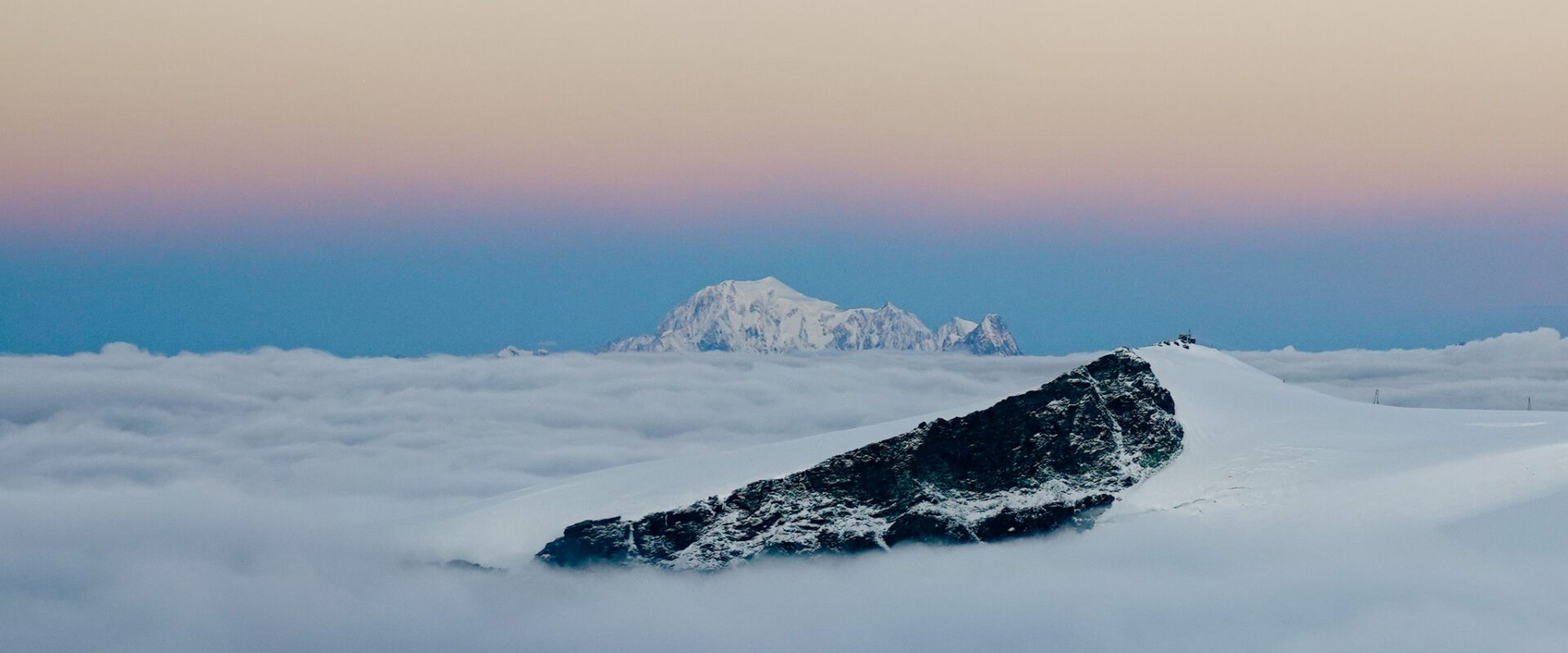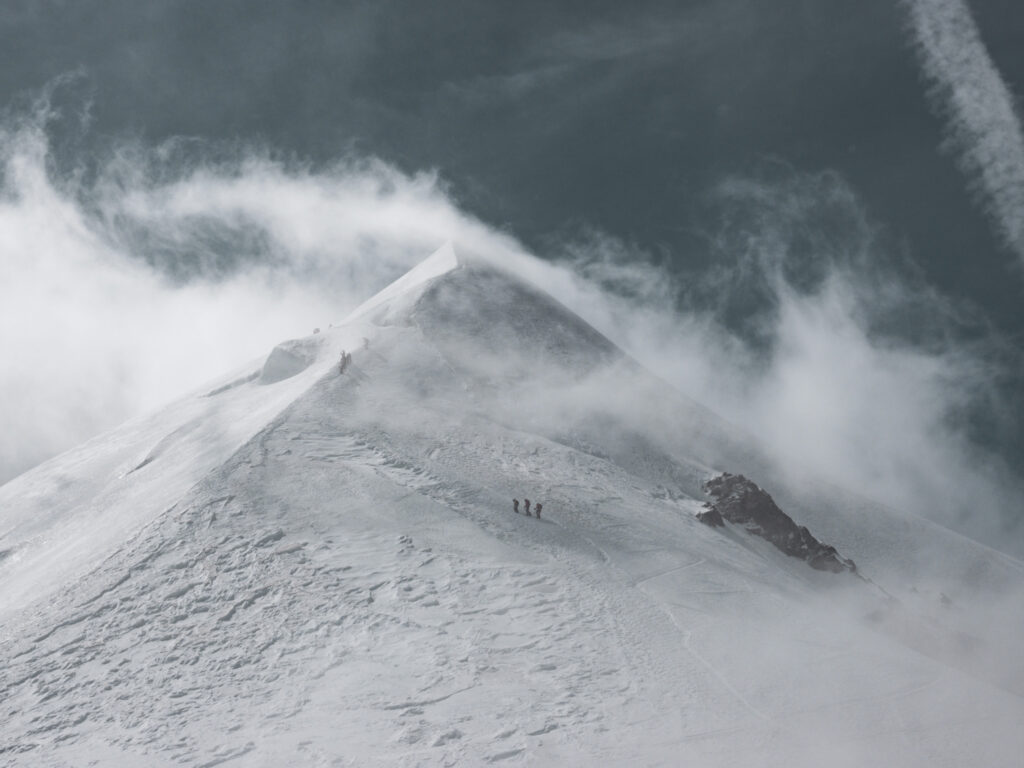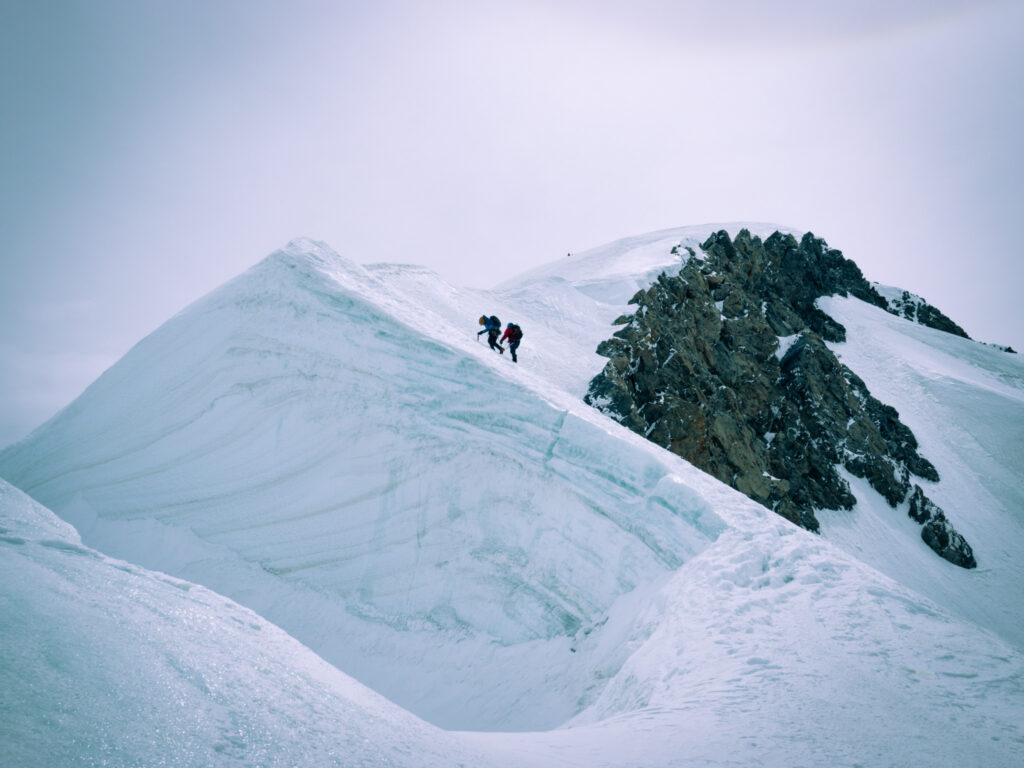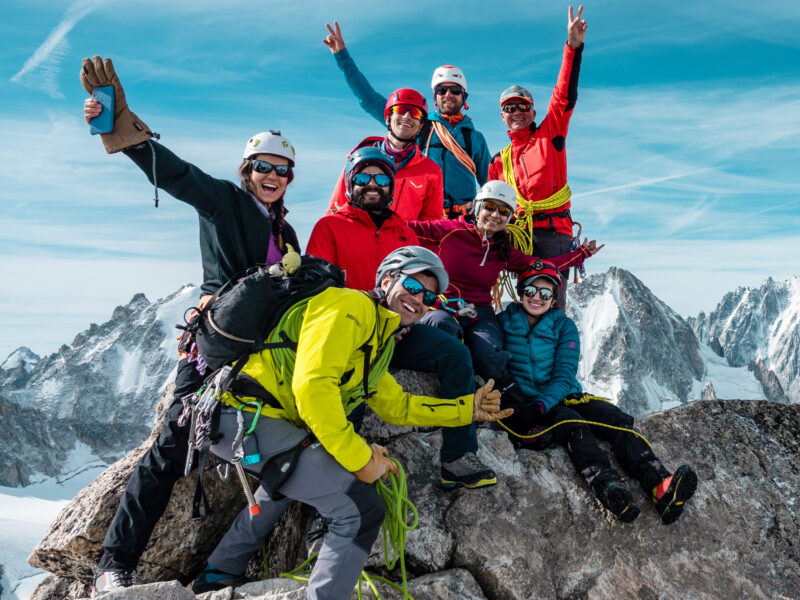BY Rami Rasamny | March 26 2024
Exploring the Rich History of Climbing Mont Blanc

Nestled in the heart of the French Alps, Mont Blanc stands as not only the highest peak in the Alps but also one of the most iconic and revered mountains in the world. Over the centuries, Mont Blanc has captured the imagination of adventurers, mountaineers, and explorers, drawing them to its majestic slopes in pursuit of conquest and discovery. Let’s delve into the rich history of climbing Mont Blanc, tracing its evolution from early exploration to modern-day mountaineering feats.
Early Exploration and Discovery
The history of climbing Mont Blanc dates back to the late 18th century when the mountain was first explored by intrepid adventurers seeking to conquer its lofty heights. The earliest recorded ascent of Mont Blanc occurred on August 8, 1786, when Jacques Balmat, a local crystal hunter, and Dr. Michel-Gabriel Paccard, a physician from Chamonix, successfully reached the summit. Their historic ascent marked the beginning of Mont Blanc’s mountaineering legacy and paved the way for future generations of climbers to follow.
The Golden Age of Alpinism
Throughout the 19th century, Mont Blanc became a focal point of the Golden Age of Alpinism, a period marked by unprecedented exploration and conquest of the Alps’ highest peaks. Adventurous climbers from across Europe flocked to Chamonix, eager to test their skills and courage on Mont Blanc’s formidable slopes. Guided by local mountain guides known as “chamoniards,” climbers tackled new routes and pioneered innovative techniques, pushing the boundaries of what was thought possible in mountaineering.

Notable Ascents and Achievements
Over the years, Mont Blanc has witnessed numerous notable ascents and achievements, each adding to the mountain’s storied history and allure. In 1861, the first woman, Marie Paradis, reached the summit of Mont Blanc, breaking gender barriers and inspiring future generations of female climbers. Throughout the 20th century, advancements in mountaineering equipment and techniques led to an increase in the number of successful ascents, further cementing Mont Blanc’s reputation as a premier mountaineering destination.
Tragedy and Triumph
Despite its breathtaking beauty, Mont Blanc’s treacherous terrain and unpredictable weather have claimed the lives of many climbers throughout history. Tragedy struck in 1950 when an Air India plane crashed into the southwest face of Mont Blanc, resulting in the loss of all passengers and crew. The disaster served as a stark reminder of the mountain’s unforgiving nature, prompting calls for improved safety measures and rescue efforts.
Modern-Day Mountaineering
Today, climbing Mont Blanc remains a cherished goal for mountaineers and adventurers from around the world. With advancements in technology and safety standards, modern climbers benefit from improved equipment, weather forecasting, and rescue capabilities, making the ascent safer and more accessible than ever before. However, Mont Blanc continues to demand respect and caution, reminding climbers of the inherent risks and challenges that accompany high-altitude mountaineering.

Preserving Mont Blanc’s Legacy
As interest in mountaineering continues to grow, efforts to preserve Mont Blanc’s natural beauty and cultural heritage have become increasingly important. Environmental conservation initiatives, sustainable tourism practices, and responsible climbing guidelines aim to protect the mountain’s fragile ecosystems and ensure that future generations can continue to enjoy the thrill of exploring Mont Blanc’s majestic slopes.

Conclusion
The history of climbing Mont Blanc is a testament to the human spirit of exploration, adventure, and resilience. From its early discovery to modern-day mountaineering achievements, Mont Blanc has captivated the hearts and minds of adventurers for centuries, inspiring them to push beyond their limits in pursuit of greatness. As climbers continue to flock to its slopes, Mont Blanc remains a symbol of endurance, courage, and the enduring allure of the mountains.
About The Author
Rami Rasamny is the founder of Life Happens Outdoors, a premium adventure travel community dedicated to transforming lives through curated outdoor experiences. A mountaineer and entrepreneur, Rami has led teams on some of the world’s most challenging peaks, from the Alps to the Himalayas. His mission is to make adventure accessible, transformative, and safe for all who seek to push their limits and Come Back Different.
About Life Happens Outdoors
At Life Happens Outdoors, we believe in the power of nature to transform lives. As proud members of the Adventure Travel Trade Association (ATTA) and the World Travel & Tourism Council (WTTC), our team of certified guides and outdoor professionals is committed to the highest standards of safety, sustainability, and excellence.
Discover more about our story and mission on our Meet LHO page, or explore our curated adventures such as the Tour du Mont Blanc Trek, the Climb of Kilimanjaro, and Chasing the Northern Lights.














